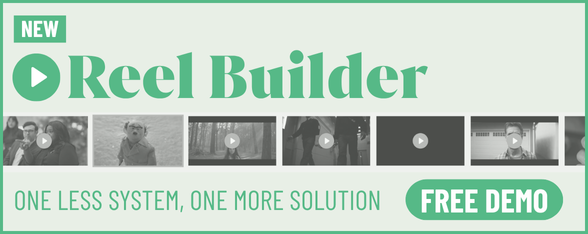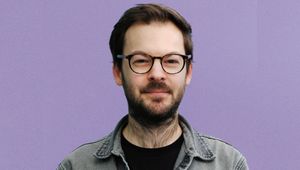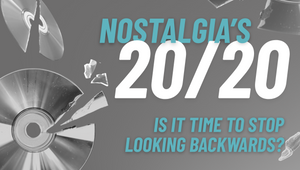
Clarity In, Clarity Out: The Value in Questioning Everything with Emily Williams

Emily Williams is head of strategy at Born Social, with over 14 years of experience spanning copywriting, account management, social media, editorial, and consultancy.
She led strategy for major brands including Guinness, Smirnoff, and Captain Morgan, and played a key role in pitch wins such as for Ford. Her expertise lies in brand positioning, cultural strategy, social-first, and fandom marketing.
Emily’s background gives her a blend of creative and strategic thinking, shaped by work across sectors from pharmaceuticals to FMCG. She’s been featured in Creativebrief BITE, writing on topics like balancing volume versus value in marketing and how brands can tap into fandoms and creators as consultants.
At the heart of her work is a passion for helping brands stay culturally relevant in an ever-evolving social landscape.
LBB> What do you think is the difference between a strategist and a planner? Is there one?
Emily> I’m not sure it matters. Strategist, planner, strategic planner – does anyone really know the difference? Titles vary agency to agency, client to client. Strategy’s a broad role, and the job itself shifts depending on the project, the brief, even the room. I really think the distinction is blurry and often unhelpful.
LBB> And which description do you think suits the way you work best?
Emily> My title’s always been strategist, but some of the smartest thinkers I know call themselves planners. However, if we’re drawing an artificial line – strategists on brand, planners on deployment – I’d call myself a strategist. I love working on the big thinking that guides everything else.
LBB> We’re used to hearing about the best creative advertising campaigns, but what’s your favourite historic campaign from a strategic perspective? One that you feel demonstrates great strategy?
Emily> It’s a classic, but Sainsbury’s ‘Try Something New Today’ – it’s the gold standard of reframing a problem. The strategy turned a lofty revenue target into something tangible: achieving just £1.14 more per shopping basket, then linking that to a real audience truth in ‘sleep shopping’ to fuel creative that genuinely shifted behaviour.
The simplicity is timeless, something that’s often lost in today’s complex agency and media landscape. The first time I read the case study felt like a genuine lightbulb moment going off in my brain.
LBB> When you’re turning a business brief into something that can inform an inspiring creative campaign, do you find the most useful resource to draw on?
Emily> Social listening done properly. Not just word clouds and sentiment scores, but diving deep - Reddit threads, TikTok comments, Discord servers. And zooming out too: tracking long arcs, cultural moments reflected in the data, pattern spotting over years, not weeks.
When you do both well, social becomes one of the richest qualitative research tools we’ve got – unfiltered, unprompted, and full of audience-first nuggets that can spark creative ideas in real time.
LBB> What part of your job/the strategic process do you enjoy the most?
Emily> It sounds like I’m lying, but almost all of it. Having bounced around in various agency roles before finding strategy, it’s so obvious that this is where I belong. But if I had to be more specific:
Research is my first love; becoming fluent in a niche audience that you really knew nothing about three weeks ago is what I love to get stuck into. I’ve also grown to love building big narratives and presenting; pitching is my absolute favourite.
And in my current role, having a big focus on the development of strategy talent in the agency is hugely rewarding. The ability to create the environment to help brilliant people succeed brings me an embarrassing amount of joy. So all in all, all of it.
LBB> What strategic maxims, frameworks or principles do you find yourself going back to over and over again? Why are they so useful?
Emily> It’s not really a maxim or a framework, and is a bit of a strategy cliché, but always questioning everything. So many client briefs are shrouded in marketing speak. This leads to unclear and fluffy strategy, which in turn leads to unclear and fluffy creative work and unfulfilling results.
Channel that inner toddler and ask ‘why?’ at every opportunity, even when you know you’re being annoying (that’s when it’s needed most). Clarity in, clarity out.
LBB> What sort of creatives do you like to work with? As a strategist, what do you want them to do with the information you give them?
Emily> I love working with those who believe in the idea of partnership and that good ideas can come from anywhere, and better ones come from collaboration. The ones that don’t see strategy as their adversary, but the other side of their coin.
I always want creatives to challenge the thinking I show them, and expect the same back from me. You always see the difference in the final work.
LBB> There’s a negative stereotype about strategy being used to validate creative ideas, rather than as a resource to inform them and make sure they’re effective. How do you make sure the agency gets this the right way round?
Emily> Making sure we have enough space for thinking and craft, so that strategy feels fully considered and rooted in truth. Retrofitting creative ideas often comes around when the strategy itself is half-baked and hasn’t delivered a creative insight to fuel the creative in the way it needs; so addressing this as the root cause helps to get things the right way round.
LBB> What have you found to be the most important consideration in recruiting and nurturing strategic talent?
Emily> Trust, space, and safety. Let strategists stretch themselves – even fail – and back them with support when they do. It’s tempting to over-protect more junior strategists, but they grow fastest when given the reins. You just need to be close enough to help them steer.
LBB> In recent years it seems like effectiveness awards have grown in prestige and agencies have paid more attention to them. How do you think this has impacted on how strategists work and the way they are perceived?
Emily> They’ve sharpened focus on outcomes, which is good. The renewed focus on awards has really brought this into focus, and gets us away from vanity metrics to more intentionally thinking about business impact, especially for social, where proving real-world impact has always been tricky.
Strategists have to think both long and short for measurement, and effectiveness awards have made this all the more important – you can’t win without doing both. And great work should be doing this anyway, so this renewed focus helps us do our jobs better, too.
LBB> Do you have any frustrations with planning/strategy as a discipline?
Emily> The tendency to overcomplicate, or the need to make things sound ‘smart’. The best strategy is simple.
LBB> What advice would you give to anyone considering a career as a strategist/planner?
Emily> Strategy as a discipline is an informed opinion, so read everything and have a point of view on it.















